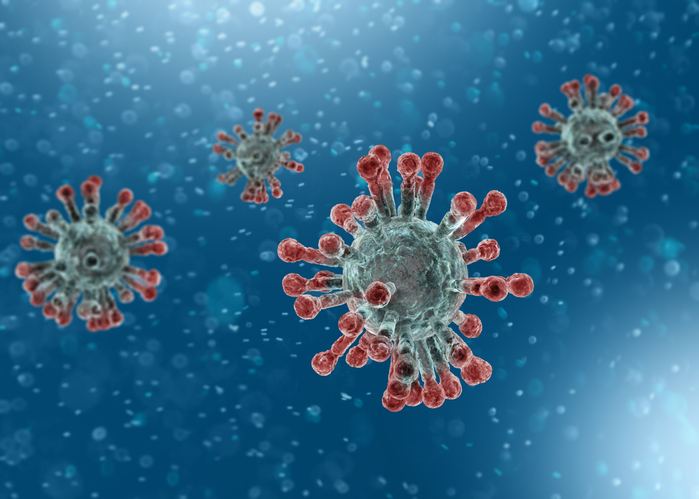By Fábio Hech Dominski1 and Bruno Hech Dominski2.
We are experiencing an outbreak of Corona Virus Disease (COVID-19), characterized by a respiratory illness that results from severe acute respiratory syndrome coronavirus 2 (SARS-CoV-2) infection (CDC, 2020). The outbreak of COVID-19 is increasing worldwide and is now a global pandemic. The COVID-19 was first reported from Wuhan, China, on 31 December 2019. Most cases are in China (81,048 cases), following by Italy (21,157), and Iran (12,729), and there are 146 countries, areas or territories with cases. To prevent the virus from spreading, infection control measures are necessary (Meng, Hua, Bian, 2020), and effective public health messaging to a community is essential to gain social support to contain the disease (Stratton, 2020).
We know that the most effective way to avoid infection is good personal hygiene and healthy habits, and today we’d like to give focus to the fundamental role of physical activity. Regular physical activity reduces the risk of a person contracting a communicable diseases (such as viral and bacterial infections) by enhancing the person’s immune system’s ability to regulate itself. Therefore, we should maintain our exercise regimes during this period, because it improves our immune system’s competency (Campbell, Turner, 2018).
Be physically active, but try to avoid gyms
We would, however, like to bring to your attention that gyms may be considered a high-risk zone (ABC, 2020). Although COVID-19 management protocols already exist for dental practitioners in dental settings (Meng, Hua, Bian, 2020), we have not seen a published paper on COVID-19 in environments used for exercise and sports to-date. Evidence indicates that the risk of infection (influenza and tuberculosis) for individuals participating in physical activity indoors increases during peak-times, when the ventilation required by those training is greater (Andrade et al. 2018). Keeping rooms dedicated to indoor physical activity well ventilated is therefore a recommended protective measure (Sun et al., 2020).
If you do plan to use the gym, it’s best to avoid periods of peak occupancy (usually at night). We also recommend that you:
- wipe down surfaces before and after using machinery
- keep your hands to yourself
- avoid touching your face
- use your own personal water bottle
- use a towel to cover equipment while you use it.
If possible, exercise outdoors! If it’s available to you go for a run in a rural area. And, if you do live in a city with no way to avoid contact with others, then try a workout at home. YouTube & exercise apps on your mobile phone will come in handy here.
It’s important to maintain a healthy lifestyle with regular exercise- it will benefit your immune system. And lastly, please follow the WHO recommendation for social distancing, so we can, collectively, overcome this health crisis.
***
Fábio Hech Dominski1 is a Brazilian physical education professor and PhD student. He lives in Florianopolis and works in Joinville. When not studying in the Laboratory of Sport and Exercise Psychology at the Santa Catarina State University, he can be found weightlifting at the gym. E-mail: fabio.dominski@udesc.br and Instagram: @fabiodominski
Bruno Hech Dominski2 is a Brazilian biologist and master’s student. He lives and studies in Florianopolis. When not doing his research at the Laboratory of Bacterial Molecular Genetics, Bruno likes to read a good book. E-mail: brunodominski7@gmail.com and Instagram: @brunodominski
1. Laboratory of Sport and Exercise Psychology (Lape) of the Santa Catarina State University – Florianópolis – SC, Brazil.
2. Laboratory of Bacterial Molecular Genetics (GeMBac) of the Federal University of Santa Catarina – Florianópolis – SC, Brazil.
Competing interests
None declared
References
ABC, 2020. Corona Cast. Gyms are sweaty. Are they risky? Available at: https://www.abc.net.au/radio/programs/coronacast/gyms-are-sweaty-are-they-risky/12044196?utm_medium=spredfast&utm_source=fb_abc_news&utm_campaign=khoros&sf231309530=1
Andrade, A., Dominski, F. H., Pereira, M. L., de Liz, C. M., & Buonanno, G. (2018). Infection risk in gyms during physical exercise. Environmental Science and Pollution Research, 25(20), 19675-19686.
Campbell, J. P., & Turner, J. E. (2018). Debunking the myth of exercise-induced immune suppression: redefining the impact of exercise on immunological health across the lifespan. Frontiers in immunology, 9, 648.
Layne, S. P., Hyman, J. M., Morens, D. M., & Taubenberger, J. K. (2020). New coronavirus outbreak: Framing questions for pandemic prevention. Science Translational Medicine, 12(534), eabb1469.
Meng L., Hua F., Bian Z. Coronavirus Disease 2019 (COVID-19): Emerging and Future Challenges for Dental and Oral Medicine. Journal of Dental Research, 2020, 1-7.
Stratton, S. J. COVID-19: Not a Simple Public Health Emergency. Prehosp Disaster Med. 2020 Apr;35(2):119. doi: 10.1017/S1049023X2000031X.
Sun, P., Lu, X., Xu, C., Sun, W., & Pan, B. (2020). Understanding of COVID‐19 based on current evidence. Journal of Medical Virology.
US Centers for Disease Control and Prevention. Coronavirus disease 2019 (COVID-19): situation summary. Available at: https://www.cdc.gov/coronavirus/2019-ncov/cases-updates/summary.html?CDC_AA_refVal=https%3A%2F%2Fwww.cdc.gov%2Fcoronavirus%2F2019-ncov%2Fsummary.html
World Health Organization. Novel Coronavirus (COVID-19) Situation. Available at: https://experience.arcgis.com/experience/685d0ace521648f8a5beeeee1b9125cd
